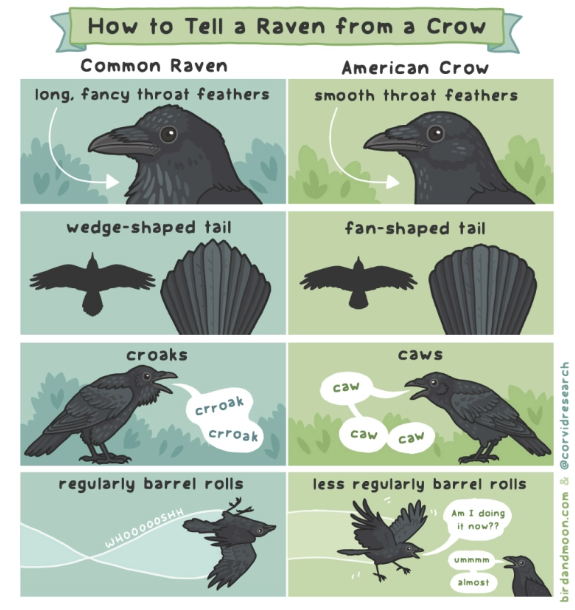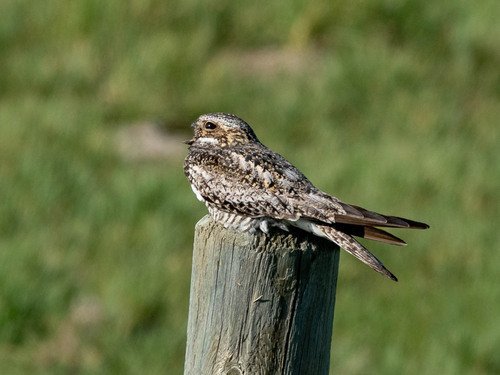
Owls in the Winter - What a Hoot!
Spotting owls in Alberta during the winter is a thrilling experience, as several species, including the great horned and snowy owl, remain active in open or edge habitats despite the cold. Their presence in our snow-covered landscapes adds an enchanting and mysterious element to the province’s winter wildlife. Read on to learn more about four owl species commonly seen in Alberta throughout the winter!

Distinguishing the American Crow and Common Raven
As biologists and environmental scientists, even we sometimes mix up the American Crow and the Common Raven. They are remarkably similar, but with a bit of practice, you can tell them apart. Here’s how to differentiate these two members of the Corvid family.

Cackling Goose (Branta hutchinsii) vs. Canada Goose (Branta canadensis)
Identifying a Cackling Goose from a Canada Goose can be challenging, but with careful observation and a few key pointers, you’ll be able to distinguish between these two species with ease. These two geese may look similar at first glance, but they have distinct characteristics and behaviors that set them apart. By understanding these differences, you can enhance your bird-watching experience and appreciate the unique traits of each species.

Swallows of Alberta - Quick ID Guide
Although it may be easy to pick out the differences between these species when you’re comparing them on a page, it is much more difficult to accurately identify these birds in the field. The birds above are all swallows. From the family Hirundinidae, swallows are typically insectivorous and agile flyers (Sibley 2016, 305). There are six swallow species you can find throughout Alberta: Bank Swallows, Tree Swallows, Cliff Swallows, Barn Swallows, Northern Rough-Winged Swallows, and Violet-green Swallows (Sibley 2016, 306-309). The most common swallows, Bank, Tree, Cliff, and Barn Swallows, typically breed in North America and winter as far south as Argentina in the Cliff Swallow’s case (Sibley 2016, 306-309: Cornell University, 2024a). Here are some common ID tips you can use in the springtime, when these frequent flyers come around!

A Helping Hand: Updates to the Migratory Birds Regulations
Migratory birds are true global citizens. They do not recognize international borders, belong to a specific country, or call only one place home. Just as humans do, these birds follow good weather and food availability across great distances. In the spring and summer months, thousands of birds make the trip up to Canada to nest, mate, and raise their young.

The Not-So-Common, Not-A-Hawk
Each spring, as the ice begins to thaw, the forests, wetlands and prairies awaken to the sound of birdsong, brought by hundreds of migratory bird species arriving home to their summer breeding grounds.
